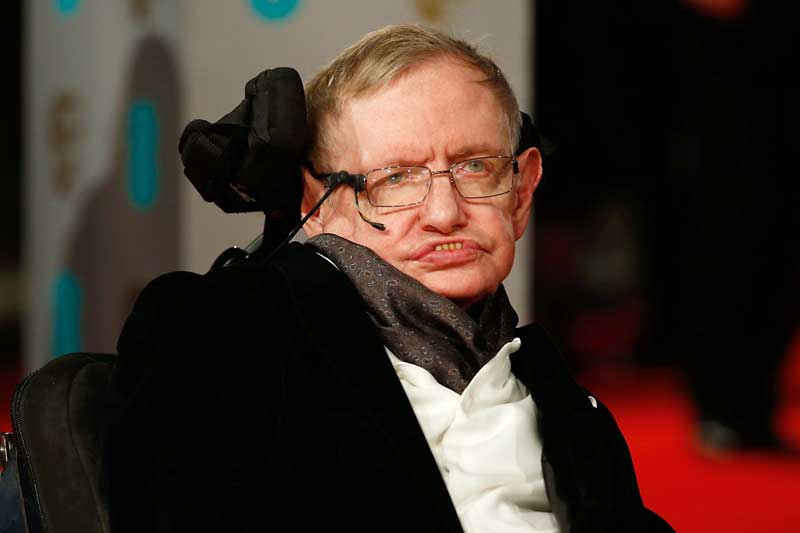Stephen Hawking, cosmology’s brightest star, dead at 76

Photo taken Feb. 8, 2015 shows British scientist Stephen Hawking at the British Academy Film Awards at the Royal Opera House in London. AFP
LONDON – Stephen Hawking, whose brilliant mind ranged across time and space though his body was paralyzed by disease, died early yesterday, a University of Cambridge spokesman said. He was 76 years old.
Hawking died peacefully at his home in Cambridge, England.
The best-known theoretical physicist of his time, Hawking wrote so lucidly of the mysteries of space, time and black holes that his book, “A Brief History of Time,” became an international bestseller, making him one of science’s biggest celebrities since Albert Einstein.
“He was a great scientist and an extraordinary man whose work and legacy will live on for many years,” his children Lucy, Robert and Tim said in a statement. “His courage and persistence with his brilliance and humor inspired people across the world. He once said, ‘It would not be much of a universe if it wasn’t home to the people you love.’ We will miss him forever.”
Even though his body was attacked by amyotrophic lateral sclerosis, or ALS, when Hawking was 21, he stunned doctors by living with the normally fatal illness for more than 50 years. A severe attack of pneumonia in 1985 left him breathing through a tube, forcing him to communicate through an electronic voice synthesizer that gave him his distinctive robotic monotone.
But he continued his scientific work, appeared on television and married for a second time.
As one of Isaac Newton’s successors as Lucasian Professor of Mathematics at Cambridge University, Hawking was involved in the search for the great goal of physics – a “unified theory.”
Such a theory would resolve the contradictions between Einstein’s General Theory of Relativity, which describes the laws of gravity that govern the motion of large objects like planets, and the Theory of Quantum Mechanics, which deals with the world of subatomic particles.
For Hawking, the search was almost a religious quest – he said finding a “theory of everything” would allow mankind to “know the mind of God.”
“A complete, consistent unified theory is only the first step: our goal is a complete understanding of the events around us, and of our own existence,” he wrote in “A Brief History of Time.”
In later years, though, he suggested a unified theory might not exist.
He followed up “A Brief History of Time” in 2001 with the more accessible sequel “The Universe in a Nutshell,” updating readers on concepts like super gravity, naked singularities and the possibility of an 11-dimensional universe.
Hawking said belief in a God who intervenes in the universe “to make sure the good guys win or get rewarded in the next life” was wishful thinking.
“But one can’t help asking the question: Why does the universe exist?” he said in 1991. “I don’t know an operational way to give the question or the answer, if there is one, a meaning. But it bothers me.”
The combination of his best-selling book and his almost total disability – for a while he could use a few fingers, later he could only tighten the muscles on his face — made him one of science’s most recognizable faces.
He made cameo television appearances in “The Simpsons” and “Star Trek” and counted among his fans U2 guitarist The Edge, who attended a January 2002 celebration of Hawking’s 60th birthday.
- Latest
- Trending




























